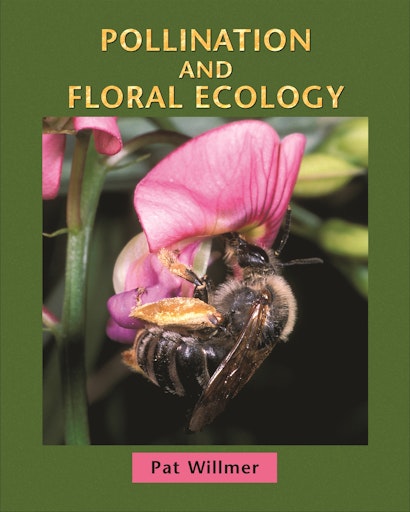Pollination and Floral Ecology is the most comprehensive single-volume reference to all aspects of pollination biology—and the first fully up-to-date resource of its kind to appear in decades. This beautifully illustrated book describes how flowers use colors, shapes, and scents to advertise themselves; how they offer pollen and nectar as rewards; and how they share complex interactions with beetles, birds, bats, bees, and other creatures. The ecology of these interactions is covered in depth, including the timing and patterning of flowering, competition among flowering plants to attract certain visitors and deter others, and the many ways plants and animals can cheat each other.
Pollination and Floral Ecology pays special attention to the prevalence of specialization and generalization in animal-flower interactions, and examines how a lack of distinction between casual visitors and true pollinators can produce misleading conclusions about flower evolution and animal-flower mutualism. This one-of-a-kind reference also gives insights into the vital pollination services that animals provide to crops and native flora, and sets these issues in the context of today’s global pollination crisis.
- Provides the most up-to-date resource on pollination and floral ecology
- Describes flower advertising features and rewards, foraging and learning by flower-visiting animals, behaviors of generalist and specialist pollinators—and more
- Examines the ecology and evolution of animal-flower interactions, from the molecular to macroevolutionary scale
- Features hundreds of color and black-and-white illustrations
Awards and Recognition
- One of Choice's Outstanding Academic Titles for 2011
Pat Willmer is professor of zoology at the University of St. Andrews. She has published extensively on pollination biology in leading scientific journals. Her books include Environmental Physiology of Animals.
"In this accessibly written reference, Willmer provides a thorough, up-to-date review of floral biology and pollination. . . . This book is comprehensive and well written, combining informative text and many helpful in-text figures and tables with 39 beautiful color plates. Additionally, the book contains a complete reference section and a useful glossary, which increases the utility of this resource for students or practitioners of pollination ecology."—Choice
"[Pollination and Floral Ecology] is a big book that I unhesitatingly consider a 'must-have' reference for anyone working in this field or thinking about entering it. . . . For now, there is nothing like it."—James D. Thomson, Quarterly Review of Biology
"[T]he book should largely be used as a reference book, which, again, can be used by those with any level of experience. It is inexpensive relative to the amount of material covered. I commend Willmer for the presumably massive undertaking of the compiling of this vast subject into this relatively small volume. Like other reference books, the material will not become obsolete for many years, and it should be the companion of any pollination ecologist entering the field."—Plant Science Bulletin
"Pollination and Floral Ecology is the most comprehensive single-volume reference to all aspects of pollination biology and the first fully up-to-date resource of its kind to appear in decades."—World Book Industry
"In Pollination and Floral Ecology Wilmer has certainly achieved her aim, and has provided us with a comprehensive, easy to read summary of the subject, providing somewhat of a one-stop shop for background information on pollination ecology. This book should be recommended as essential reading for any postgraduate or undergraduate working anywhere within the realm of pollination ecology, and will also be an indispensable reference tool for established pollination researchers and ecosystem managers around the world."—Tobias Smith, Austral Ecology
"This is an impressive and valuable contribution to pollination ecology, floral evolution, plant biology, and entomology. The book is extremely up-to-date. I am convinced it will become the central reference in the field and remain so for many years. A pleasure to read."—W. Scott Armbruster, University of Portsmouth and University of Alaska, Fairbanks
"There has not been a treatment of pollination biology as extensive as this since Faegri and van der Pijl's classic book was first published in the 1960s. Willmer does an amazing job catching the reader up on the literature of the last forty years while keeping the material accessible to the novice biologist. This will become the bible for floral biologists studying plant-pollinator interactions."—Charles B. Fenster, University of Maryland

